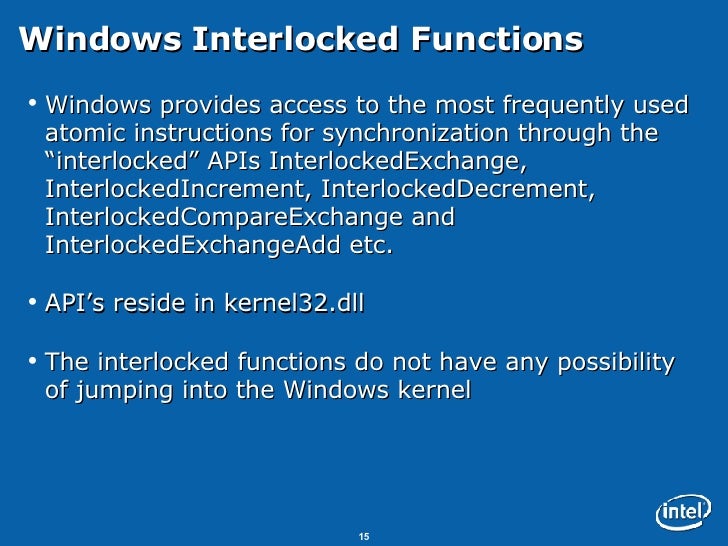
Interlockedincrement
Elvenar gameplay. Research better equipment for your troops and train your heroes to become formidable in battle. As goblins storm across a torn land, it’s up to you and a band of heroes to restore balance to the kingdom. Adventure into various locations and battle ferocious enemies. Discover an epic storyline awaiting you as you rebuild the land!Features:Build Your Heroes: Acquire gear and level the skills to customize your heroes and cater them to your battle tactics.Arena: Test your might against other players in your tier in the PvP Arena.Automated Combat: Fights are all about strategy. Build your cities and upgrade the buildings.
2013-9-13 InterlockedIncrement merely adds 1 to the value. The more instructions you insert between the loadlink and storeconditional, the greater the chance that your storeconditional will fail and you will have to retry. And if you put too much code in between, your storeconditional will never succeed. As an extreme example, if you put code that.
InterlockedIncrement function. 2 minutes to readIn this articleIncrements (increases by one) the value of the specified 32-bit variable as an atomic operation.To operate on 64-bit values, use the function. Syntax LONG InterlockedIncrement(LONG volatile.Addend);ParametersAddendA pointer to the variable to be incremented. Return valueThe function returns the resulting incremented value. RemarksThe variable pointed to by the Addend parameter must be aligned on a 32-bit boundary; otherwise, this function will behave unpredictably on multiprocessor x86 systems and any non-x86 systems.

See alignedmalloc.The interlocked functions provide a simple mechanism for synchronizing access to a variable that is shared by multiple threads. This function is atomic with respect to calls to other interlocked functions.This function is implemented using a compiler intrinsic where possible. For more information, see the WinBase.h header file and.This function generates a full memory barrier (or fence) to ensure that memory operations are completed in order.Itanium-based systems: For performance-critical applications, use or instead.